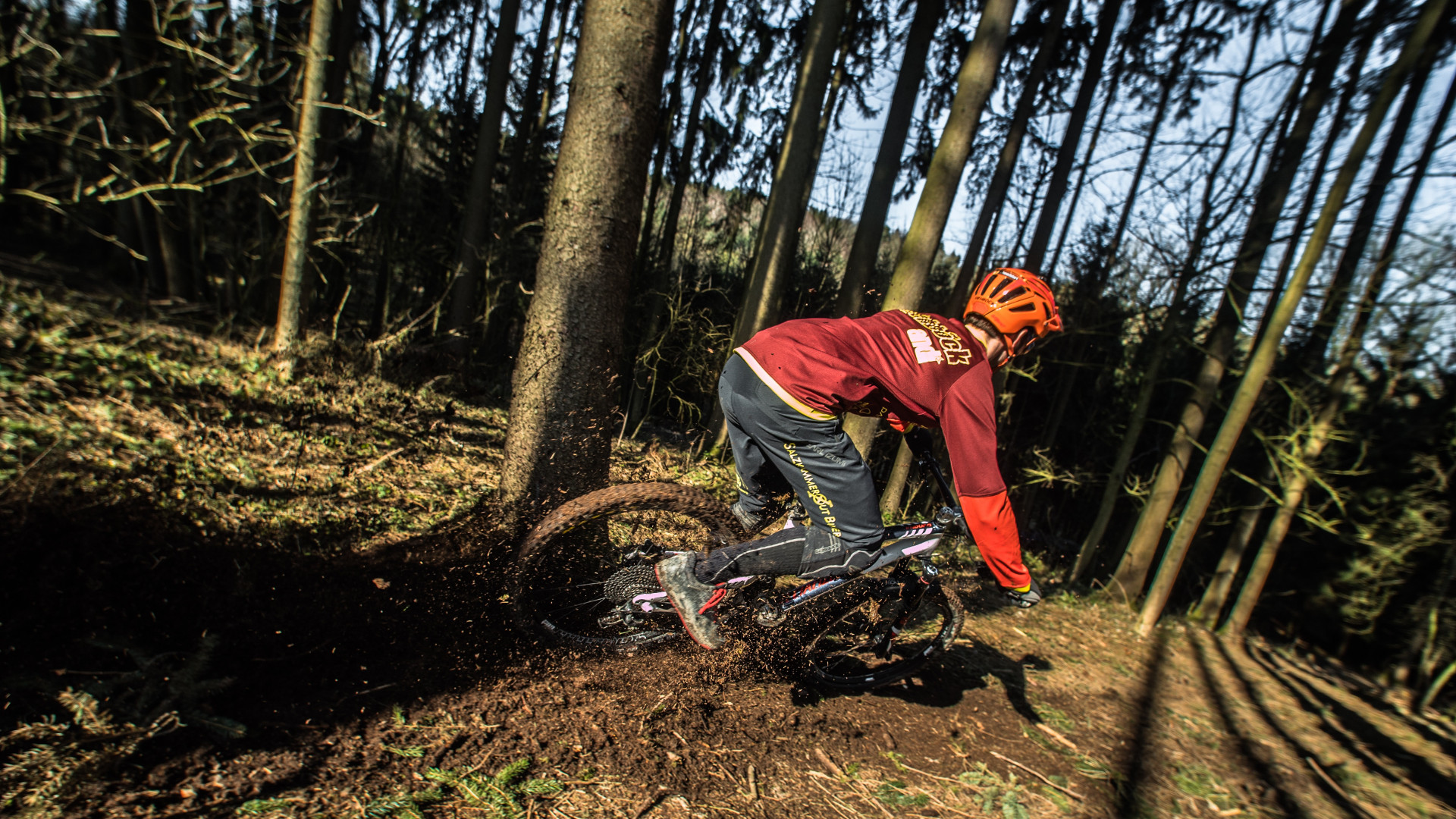House Republicans recently advanced a bill allowing mountain biking in federal wilderness areas, where they’ve been banned for decades. The move dredges up a long-resolved debate at a time when our public lands face more pressing threats, including shrinking monuments, increased drilling, climate change and crippling wildfire costs. On top of this, the bill — which is really about more than mountain bikes — threatens the 1964 Wilderness Act, one of America’s bedrock conservation laws. It deserves strong opposition.
The bill, H.R. 1349, was introduced by Representative Tom McClintock (R-Calif.). It gained five Republican cosponsors and in December sailed through the Republican-controlled House Natural Resources Committee. It now awaits a House vote.
McClintock claims introducing biking into wilderness “would restore the original intent of the Wilderness Act.” While the statement lacks legal or historical merit, it does echo a fringe group out of California called the Sustainable Trails Coalition, which appears intent on opening the Pacific Crest Trail and other protected areas to biking. Their effort is opposed by other groups, including the Pacific Crest Trail Association and the International Mountain Biking Association.
No legal argument supports biking in wilderness. Unambiguously, the 1964 Wilderness Act states there shall be no motorized vehicles and “no other form of mechanical transport” in wilderness. Yet some claim “mechanical transport” somehow exempts bicycles, or unintentionally excluded a sport that emerged after the law. They tout an early Forest Service misinterpretation that initially allowed bicycles in wilderness but was corrected more than 30 years ago. They omit the fact that other agencies never adopted the Forest Service misinterpretation.
The claims ignore the historical context and foresight of the Wilderness Act. We should remember that the law grew from a half-century of public-lands battles fought by America’s most influential conservation thinkers, including Aldo Leopold, Bob Marshall, and Olaus and Mardy Murie. Theirs was a multigenerational struggle to safeguard vestiges of the public lands from increasing population and technology.
The technology part is important. The framers of the Wilderness Act knew human ingenuity was not petering out in 1964 — they lived in an era of fantastic invention. Forms of transport tested at the time included jetpacks, gliders, aerocycles and various new wagons, boats and bicycles. That the law anticipated and banned future forms of mechanical transport is indisputable.
But also consider the reasoning behind the concern. It was most concisely expressed by the bill’s principal author, Howard Zahniser. In 1956, as the Wilderness Act began its eight-year journey into law, he defined wilderness as a place where we stand without the “mechanisms that make us immediate masters over our environment.”
Zahniser was a Thoreauvian pacifist deeply troubled by the Holocaust, atomic warfare and other 20th century crises. In designated wilderness, he saw a suite of biophysical and social attributes that carried the potential to make us better people. But to fulfill its promise in modern times, by offering opportunities for raw challenge, humility and solitude, wilderness had to remain a place of human restraint.
Zahniser’s writings conveyed uniquely American ideas on nature that evolved over 150 years. They reflected the painter George Catlin camped on the Missouri frontier; Henry David Thoreau facing “only the essential facts of life” alongside Walden Pond; John Muir scaling the high Sierras in pursuit of hidden glaciers; Aldo Leopold on horseback in the great expanse of the Gila; and Bob Marshall hiking….well, everywhere. Marshall trekked through regions from the Adirondacks to the Brooks Range and, like Leopold, crafted early Forest Service rules on wilderness areas, including their core value as undeveloped landscapes accessed without motors and with “no possibility of conveyance by any mechanical means.” Marshall then helped form The Wilderness Society in 1935 to guard those ideals in an increasingly mechanized age, and the group eventually led the movement for legislated wilderness.
Other women and men contributed, too, so that when Zahniser wrote the words that became the law, the American notion of wilderness was solidly a place to experience by primitive means — where visitors “depend exclusively on [their] own effort for survival,” as Marshall put it. Added to ecological benefits, goals included preserving the remoteness and challenge that forged the American character and providing solitude, for inspiration, contemplation and renewal. Codifying the notion was debated for nearly a decade, and the Act eventually passed Congress with almost unanimous consent.
So we know biking has no legal place in wilderness and that it defies the intent of the Wilderness Act. But what harm would it actually do to modern wilderness areas? Most broadly, but least tangibly, it would undermine the sanctity of wilderness as a place we go unaided by machines, where person and place intimately meet. More concretely, mechanical transport would erode remoteness and solitude, the resources protected by law and sought by many wilderness visitors. It would force those seeking the “primitive” types of recreation described by the law, including hunters, packers and others, into even smaller enclaves than available today.
There’s a political cost, too. Allowing biking and other wheeled access as described in H.R. 1349 fulfills a long-held Republican desire to crack open Wilderness Act protections, usually on behalf of logging, drilling, mining or motorized recreation. Allowing biking provides these interests with a convenient precedent.
Those pressing for bikes in wilderness ignore all this. Instead they too often reduce the focus to issues of trail erosion, where they front overly rosy claims. Or they conflate the ban on bikes with a ban on certain people. This ploy stirs emotion but undercuts serious public-lands discourse. Yet McClintock, the Sustainable Trails Coalition and others use the trick. A Bike Magazine video even casts bikes in wilderness as a civil-rights issue. That’s an affront to anyone who has worked for voting rights, fair housing, protection against hate crimes or other actual civil rights.
Advocates also oversimplify prohibitions on bikes in wilderness study areas, calling them overreach by conservationists or the feds. But such bans are essential to the purpose of these study areas, which must be carefully managed to preserve their eligibility as wilderness pending congressional review. Once bikes, snowmobiles or other forms of transport are established, the purpose of a study area is undone.
And let’s not be distracted by the inclusion of wheelchair access in McClintock’s bill. The Americans with Disabilities Act already unequivocally assures wheelchair access to wilderness, a clarification representing the only time in over a half-century that the Wilderness Act was amended.
Lastly, consider the issue’s scale. The wilderness system is limited to roughly 53 million acres outside Alaska. Smaller than Colorado, that portion is scattered across 43 states. And while most of the land is in the West, most of it is also rugged and unbikable. Meanwhile hundreds of millions of acres remain open to biking.
Talk about wanting the last pork chop.
In the end McClintock’s bill caters to a small group of bike enthusiasts apparently out of touch with the intent of federal wilderness. But it threatens real harm by unraveling protections and pitting recreationists against each other at a time when public lands need our unified support. We should join the dozens of conservation groups opposing the measure, then get back to the real work of defending our lands.
© 2018 Tim Lydon. All rights reserved.
The opinions expressed above are those of the author and do not necessarily reflect those of The Revelator, the Center for Biological Diversity or their employees.



Bikes don’t belong on ANY trails, especially wilderness ones. Bikes are vehicles and should be confined to roads, period. Bikes on trails disturb wildlife and hikers and cause erosion in hilly and mountainous areas. Unfortunately, mountain bikers are not cool like people who ride bikes for transportation, and they only care about themselves and getting to ride wherever they want. This fight has been going on for around 15 years and it looks like it’s not going away any time soon.